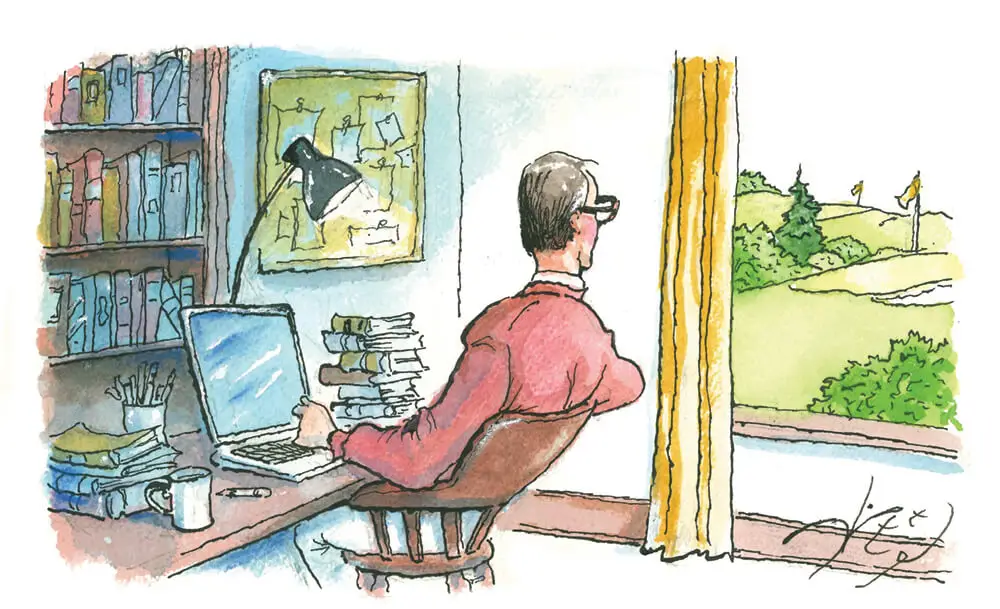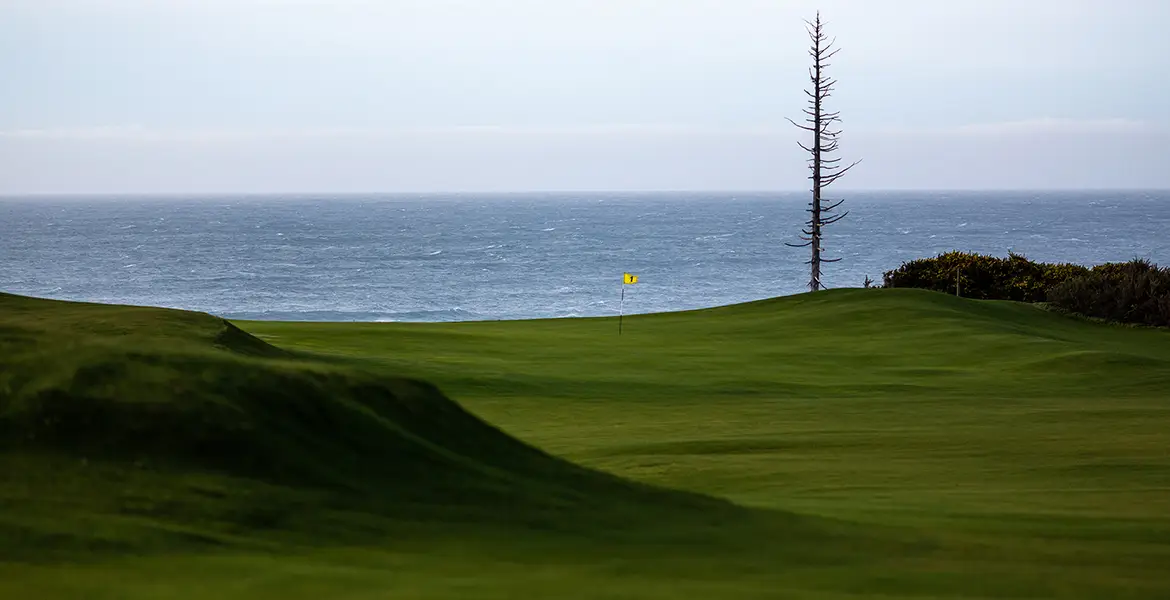Golf and I are currently separated. No pity, please—I haven’t missed a shot in months.
The last time I played golf was March.
Okay, maybe I did sneak in three rounds in June (a member-guest with my son), but other than that, not so much as a chip shot in the past six months. That’s the longest time-out of my life—twice as long as the layoffs following a double hip replacement and a quintuple heart bypass—and this time my health is perfect.
The reason: I’m booked. In April I signed a contract for a book that’s due to be released the week before next year’s Masters. I’m actually the co-author with an old friend from the golf business, Hughes Norton, who as the longtime head of the golf division of Mark McCormack’s International Management Group (IMG) was the agent for Tiger Woods, Greg Norman, and several other world-number-one-ranked players before being abruptly fired by Tiger and then McCormack. He got a hefty golden parachute—along with a non-compete clause and a gag order—but now he’ll be talking in RAINMAKER: Superagent Hughes Norton and the Money Grab Explosion of Golf from Tiger to LIV and Beyond. Although the story is Hughes’s, the words will be mostly mine, and Simon & Schuster wants 90,000 of them by October 1. That means writing roughly 500 words a day—every day—for six months. And I’m a slow writer. Ergo my state of golflessness.

But that shameless plug (and notice I didn’t stoop so low as to say you can pre-order a copy at bookshop.org) is not the point I’m here to make.
I’d feared that going cold turkey would produce a host of withdrawal symptoms: teary Saturday mornings, fits of compulsive carpet putting, that sort of thing. But instead, I began to feel strangely, well, healthier.
Sir Walter Simpson, a 19th-century British toff who was arguably the first golf psychologist, observed that “excessive golfing dwarfs the intellect.” I’m not sure I agree with Sir Walter, as I know some very bright people with near-perfect attendance records at their clubs, but I do believe excessive golf can damage the soul.
Stepping away from the game has given me a new perspective—a view from the outside in—not so much at the game as myself. It turns out, much of what I’ve been abstaining from this season has been well worth missing.
Since taking my sabbatical, I have not hit a bad shot, have not scored worse than my handicap, have not lost a match, and have not let down a playing partner. I’ve relinquished my reserved seat on the golf struggle bus.
Not once have I seethed at the glacial pace of the group in front of me. Not a moment has been wasted stewing over how poorly I played today or might tomorrow. There has been no need to apologize for either my bad golf or bad mood, and not once have I felt the miserable duty to pose as a good loser. No dashed dreams, thwarted ambitions, or bitter regrets.
I’ve slept better, I’ve saved hundreds of dollars, and I’ve scored valuable points with the wife by spending more time working and less playing, all of which has raised my spirits. And while I’ve spent so little time outdoors my skin is the color of a Bremner wafer, I have experienced no back pain, joint aches, leg cramps, or blisters. Not even a mosquito bite. Who knew I could have such a splendid quarantine?
With fall—and freedom—now at hand, I’m looking forward to reconnecting with the game while also trying to maintain some of the serenity I’ve found in golf exile. My goal will be to keep the expectations and pressure low, focus on the pleasures of the game that aren’t dependent upon crisp contact or topnotch performance. I’m talking about the simple things—fresh air and exercise, banter and laughter among friends, the singular joy of watching a well-struck shot fly toward a distant flag. When you boil it all down, that’s what golf is truly about.
But my time of incarceration, combined with the book project, has also brought me to look at the pro side of our game, and how dramatically it has changed, not just in the last few months but overall.
A century ago, Bobby Jones declared “There is golf and there is tournament golf—and they are not at all alike inside.” Never has that statement been more true than today. Fundamentally, professional golfers—like all pro athletes—are entertainers. They’re window dressing, the poster boys of the game. They inspire people to watch golf, maybe even take a stab at playing. Jones, a young amateur outplaying the pros, was a huge attraction. Even after he retired, when he visited a pro event the throngs following him in the gallery—watching him watch—were larger than any following the players.
The number of Americans playing golf expanded dramatically during the 1920s and ’30s partly because of Bobby Jones, and exploded again in the ’60s and ’70s thanks in large part to the visceral appeal of Arnold Palmer. At around the same time, golf started to become a big business, as television, corporate America, and a visionary PGA Tour commissioner in Deane Beman combined to make broadcast rights and tournament purses soar. A similar dynamic occurred at the turn of the century, thanks to Tiger Woods, although curiously, while the Woods era drew millions of people to watch the game, it did little to move the needle with regard to the number of players.
The biggest beneficiaries were the tour players themselves. Fifty years ago, journeyman Frank Beard declared, “We owe eighty cents of every dollar we earn to Arnold Palmer,” and the same might be said by any player who was a contemporary of Tiger: In 1996, the last year before he turned pro, the total purse on the PGA Tour was $101 million; this year it was $563 million, shared by roughly 150 players. That’s about $3.75 million each.
And now, in the name of further wretched excess, comes multi-billion-dollar LIV Golf. A year ago, it was dispiriting to see Mickelson, Johnson, DeChambeau, et al sell out. This year it has been equally dispiriting to watch a desperate PGA Tour reach its “framework agreement” with LIV.
Talk about bifurcation. Blessedly, the pros’ game is not our game, the game. And they will always need us more than we need them. I’ve always subscribed to the notion that if all the world’s best professional golfers were to assemble at an event, along with all the various officials, corporate sponsors, and media that comprise the pro golf juggernaut, and if during that event an immense meteor were to crash down on the tournament obliterating everyone and everything, the next morning golfers the world over would observe a moment of silence—and then go right on playing.
Which is just what I now plan to do. Oh, I’ll likely play a bit worse than I did six months ago, but I think I’ll enjoy it more. And that’s something billions can’t buy.
Thank you for supporting our journalism. If you prefer to read in print, you can also find this article in the Fall 2023 issue of LINKS Magazine. Click here for more information.






